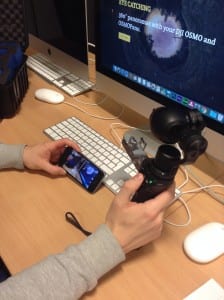When projected onto light coloured clothing or skin, images are reflected relatively fine. However, when projected onto it, black material absorbs the light. This occurrence means the dancers will have to wear light coloured clothing if they want the images to be visible when projected onto them.
Another theoretical solution to this would be projectors with more lumens. This wound allow the dancers to wear darker clothes (as the dance choreographer originally intended). However, with the current resources, this is not an option. Three projectors of that calibre would be very costly.
Under the right circumstances, it is possible to project a perfect image onto a black black background. You just need the right material:
Dubbed Black Diamond, this material reflects 85% of light, opposed to just the 10-15% from a traditional white screen. Of course, the company that produce this aren’t open about the technology they use in the material to produce this. But from my (limited and assumptious) understanding, this material is essentially subtly shiny. This means we can see the image clearer because it reflects more light.

